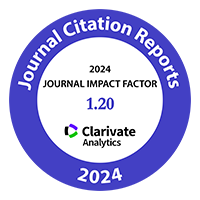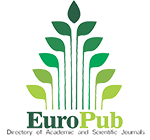Nutritional and morpho-anatomical characterization of Phyllostachys aurea (Poaceae, Bambusoideae, Bambuseae) foliage for Argentine livestock systems
DOI:
https://doi.org/10.48162/rev.39.158Palabras clave:
bambú leñoso, valor nutricional, anatomía y morfología de las hojas, alimentación para rumiantesResumen

Bamboo cultivation in Argentina could represent a major economic activity if its various applications were revealed. This study characterized the anatomy and micromorphology of leaf blades by optical and scanning electron microscopes. Foliage leaves presented predominant parenchyma and scarce sclerenchyma. Foliage chemical and biological composition were analyzed in 3 populations of P. aurea sampled in two contrasting seasons of the year. The six samples evaluated showed 13% protein, adequate for ruminant feed. Neutral detergent fiber (aNDFom) was approximately 60% DM, a probable limiting factor for consumption. Significant differences in ADFom (acid detergent fiber) and ADLom (acid detergent lignin) favored spring results, with lower values than winter results. The presence of silica in different cell types could limit digestion. Fermentation kinetics indicated that dry matter digestibility is close to 50%, and higher in spring given lower amounts of indigestible components. In addition, all samples analyzed had a low content of immediately soluble material and a high content of potentially fermentable insoluble material. Anatomy and chemical-nutritional characterization allow P. aurea foliage to be considered in ruminant feeding.
Highlights:
- Nutritional and morpho-anatomical studies are complementary in the evaluation of forages for ruminants.
- Anatomy and chemical-nutritional characterization allow aurea foliage to be considered in ruminant feeding.
- Silica in epidermis, trichomes, cell walls or lumen of grasses acts as structural inhibitor of microbial digestion leading to lower acceptability and DMD.
- The high silica content accounts for 82% of the total ash, suggesting the presence of indigestible substances.
- Phyllostachys aurea foliage leaves showed 13% protein, adequate for ruminant feed and neutral detergent fiber was approximately 60%DM.
Descargas
Citas
Alchouron, J.; Navarathna, C.; Chludil, H. D.; Dewage, N. B.; Perez, F.; Hassan, E. B.; Pittman Jr., C. U.; Vega, A. S.; Mlsna, T. E. 2020. Assessing South American Guadua chacoensis bamboo biochar and Fe3O4 nanoparticle dispersed analogues for aqueous arsenic (V) remediation. Science of the Total Environment. 706: 135943. https://doi.org/10.1016/j.scitotenv.2019.135943
Alchouron, J.; Navarathna, C.; Rodrigo, P. M.; Snyder, A.; Chludil, H. D.; Vega, A. S.; Bosi, G.; Perez, F.; Mohan, D.; Pittman Jr., C. U.; Mlsna, T. E. 2021. Household arsenic contaminated water treatment employing iron oxide/bamboo biochar composite: An approach to technology transfer. Journal of Colloid and Interface Science. 587: 767-779. https://doi.org/10.1016/j. jcis.2020.11.036
Alchouron, J.; Bursztyn Fuentes, A. L.; Musser, A.; Vega, A. S.; Mohan, D.; Pittman Jr., C. U.; Mlsna, T.; Navarathna, C. 2022. Arsenic removal from household drinking water utilizing biochar and biochar composites: a focus on scale up. In: Mohan, D.; Pittman Jr., C. U.; Mlsna, T. (Eds.). Sustainable biochar for water and wastewater treatment. Netherlands. Elsevier. 277-320.
Andriarimalala, J. H.; Kpomasse, C. C.; Salgado, P.; Ralisoa, N.; Durai, J. 2019. Nutritional potential of bamboo leaves for feeding dairy cattle. Pesquisa Agropecuária Tropical. V. 49: e54370. https://doi.org/10.1590/1983-40632019v4954370
AOAC. International Association of Official Analytical Chemists. 1990. Official Methods of Analysis. Arlington.
Asaolu, V. O.; Odeyinka, S. M.; Akinbamijo, O. O.; Sodeinde, F. G. 2010. Effects of moringa and bamboo leaves on groundnut hay utilization by West African Dwarf goats. Livestock Research for Rural Development. Volume 22, Article #12 http://www.lrrd.org/lrrd22/1/asao22012.htm
Astibia, O. R.; Cangiano, C. A.; Cocimano, M. R.; Santini, F. J. 1984. Utilización del nitrógeno por el rumiante. Revista Argentina de Producción Animal. 4(4): 373-384.
Bhandari, M.; Kaushal, R.; Banik, R. L.; Tewari, S. K. 2015. Genetic evaluation of nutritional and forage quality of different bamboo species. Indian Forester. 141(3): 265-274.
Bhardwaj, D. R.; Sharma, P.; Bishist, R.; Navale, M. R.; Kaushal, R. 2019. Nutritive value of introduced bamboo species in the northwestern Himalayas, India. Journal of Forestry Research. 30(6): 2051-2060. https://doi.org/10.1007/s11676-018-0750-2
Campos Roasio, J.; Peñaloza Wagenknecht, R.; Kahler González, C.; Poblete W. H.; Cabrera Perramón, J. 2003. Bambú en Chile. Parte 1. Corporación de Investigación Tecnológica de Chile, Universidad Austral de Chile, FONDEF. Santiago, Chile. 143 p. https://doi.org/10.52904/20.500.12220/690
Clark, L. 2005. Bamboo biodiversity. Iowa State University. https://www.eeob.iastate.edu/ research/bamboo/index.html
D´Ambrogio de Argüeso. 1986. Manual de técnicas en histología vegetal. Hemisferio Sur. Buenos Aires. 83 p.
Ellis, R. P. 1976. A procedure for standardizing comparative leaf anatomy in the Poaceae. I. The leaf-slide as viewed in transverse section. Bothalia. 12: 65-109.
Ellis, R. P. 1979. A procedure for standardizing comparative leaf anatomy in the Poaceae. II. The epidermis as seen in surface view. Bothalia. 12: 641-671.
Fernández Pepi, M. G. 2013. Estudios fitolíticos de las comunidades vegetales del ecotono fueguino como una herramienta para reconocer sus variaciones de composición en el pasado reciente (Tesis Doctoral). Facultad de Ciencias Exactas y Naturales. Universidad de Buenos Aires. Argentina.
Fernández Pepi, M. G.; Todarello, M. (ex-aequo); Schrauf, G.; Wawrzkiewicz, M; Jaurena, G. 2018. Variación de la calidad forrajera asociada a eventos transgénicos de Paspalum dilatatum Poir. Revista Argentina de Producción Animal. 37 (Supl. 1): 313.
Guerreiro, C. 2014. Flowering cycles of woody bamboos native to southern South America. Journal of Plant Research. 127(2): 307-313. https://doi.org/10.1007/s10265-013-0593-z
Guerreiro C.; Vega, A. S. 2021. Bamboo flowering in South America: What the past tells about the future. p. 353-377. In: Ahmad, Z.; Ding, Y.; Shahzad, A. (Eds.). Biotechnological advances in bamboo. Singapore. Springer. https://doi.org/10.1007/978-981-16-1310-4_15
Halvorson, J. J.; Cassida, K. A.; Turner, K. E.; Belesky, D. P. 2010. Nutritive value of bamboo as browse for livestock. Renewable Agriculture and Food Systems. 26(02): 161-170. https://doi. org/10.1017/S1742170510000566
INTA. CIRN (Centro de Investigación en Recursos Naturales). Sistema de información y gestión agroecológica. http://siga.inta.gob.ar/#/; consultado el 17 de marzo de 2023.
Jaurena, G.; Danelón, J. L. 2006. Tabla de composición de alimentos para rumiantes de la región Pampeana argentina. Buenos Aires, Hemisferio Sur. 62 p.
Judziewicz, E. J.; Clark, L. G.; Londoño, X.; Stern, M. J. 1999. American bamboos. Washington, D. C. Smithsonian Institution Press. 392 p.
Labouriau, L. G. 1983. Phytolith work in Brazil: a minireview. The Phytolitharien. 2: 6-10.
Londoño, X. 2009. Usos y potencialidades de los bambúes en Sur América. Botânica Brasileira: futuro e compromissos: 236-243. 60° Congreso Nacional de Botánica. Feira de Santana. BA. Brasil.
Martínez, L. V. 2008. Evaluación del espacio para la ganadería extensiva sustentable y la conservación del huemul (Hippocamelus bisulcus), en el Parque Nacional Los Alerces, provincia de Chubut, Argentina. APRONA Boletín Científico. 41: 45-67.
Massey, F. P.; Ennos, A. R.; Hartley, S. E. 2007. Herbivore specific induction of silica-based plant defences. Oecologia. 152(4): 677-683.
McClure, F. A. 1938. Notes on Bamboo culture with special reference to southern China. Reprint from the Hong Kong Naturalist. 9(1-2): 1-18.
McClure, F. A. 1953a. Bamboo as a building material. Contribution of the Foreign Agricultural Service, United States Department of Agriculture. Washington. D. C.
McClure, F. A. 1953b. Bamboo as a source of forage. Proceedings of the 8th Pacific Scientific Association Congress: 609-644.
McClure, F. A. 1966. The bamboos. A fresh perspective. Harvard University Press. Cambridge. Massachusetts.
Mekuriaw, Y.; Urge, M.; Animut, G. 2011. Role of indigenous Bamboo species (Yushania alpina and Oxytenanthera abyssinica) as ruminant feed in northwestern Ethiopia. Livestock Research for Rural Development. 23: Article #185. http://www. lrrd.org/lrrd23/9/meku23185.htm.htm
Mertens, D. R. 1973. Application of theoretical mathematical models to cell wall digestion and forage intake in ruminants. Ph.D. thesis. Cornell Univ. Ithaca. NY.
Neumann, K.; Strömberg, C. A. E.; Ball, T.; Albert, R. M.; Vrydaghs, L.; Cummings, L. S. 2019. International Code for Phytolith Nomenclature (ICPN) 2.0. Annals of Botany. 124(2): 189-199.
Ocheja, J. O.; Ayoade, J. A.; Okwori, A. I.; Abu, A.; Oyibo, A. 2013. Nutritive quality of bamboo leaves as feed resource for herbivorous animals. Journal of Agricultural Production and Technology. 2(2): 61-65.
Ørskov, E. R.; McDonald, I. 1979. The estimation of protein degradability in the rumen from incubation measurements weighed according to rate of passage. Journal of Agricultural Science. 92: 499-503.
Panizzo, C. C.; Fernández, P. V.; Colombatto, D.; Ciancia, M.; Vega, A. S. 2017. Anatomy, nutritional value and cell wall chemical analysis of foliage leaves in Guadua chacoensis (Poaceae, Bambusoideae, Bambuseae), a promising source of forage. Journal of Science of Food and Agriculture. 97(4): 1349-1358. https://doi.org/10.1002/jsfa.7873
Parodi, L. R. 1937. La floración de Phyllostachys aurea en la Argentina. Revista Argentina de Agronomía. 4: 307-308.
Parodi, L. R. 1943. Los Bambúes cultivados en la Argentina. Revista Argentina de Agronomía. 10(2): 89-110.
Rúgolo, Z. E. 2016. Phyllostachys. In: Rúgolo, Z. E. (Ed.). Bambúes leñosos nativos y exóticos de la Argentina. Hurlingham, Ed. Trama. 160-166.
Sahoo, A.; Ogra, R. K.; Sood, A.; Ahuja, P. S. 2010. Nutritional evaluation of bamboo cultivars in sub- Himalayan region of India by chemical composition and in vitro ruminal fermentation. Grassland Science. 56: 116-125. https://doi.org/10.1111/j.1744-697X.2010.00183.x
Satya, S.; Bal, L. M.; Singhal, P.; Naik, S. N. 2010. Bamboo shoot processing: food quality and safety aspect (a review). Trends in Food Science and Technology. 21: 181-189. https://doi. org/10.1016/j.tifs.2009.11.002
Van Soest, P. J.; Robertson, J. B.; Lewis, B. A. 1991. Methods for dietary fiber, neutral detergent fiber, and nonstarch polysaccharides in relation to animal nutrition. Journal of Dairy Science. 74: 3583-3597.
Vega, A. S.; Castro, M. A.; Guerreiro, C. 2016. Ontogeny of fusoid cells in Guadua species (Poaceae, Bambusoideae, Bambuseae): evidence for transdifferentiation and possible functions. Flora. 222: 13-19.
Wawrzkiewicz, M.; Danelón, J. L.; Grigera, J. J. 2005. Desaparición in vitro de forraje ensilado sometido a distintos procesamientos de laboratorio. Archivos Latinoamericanos de Producción Animal. 13(4): 191-214.
Wawrzkiewicz, M.; Álvarez Ugarte, D. H.; Fernández Pepi, M. G.; Jaurena, G. 2019. Desaparición de sustrato, ambiente ruminal y producción de metano in vitro de dietas con heno y burlanda seca de maíz. 42° Congreso Argentino de Producción Animal (AAPA). Bahía Blanca, Argentina. 42 (Supl.1): 32.
Wilson, J. R. 1994. Cell wall characteristics in relation to forage digestion by rumiants. Journal of Agriculture Science. 122: 173182.
Yayota, M.; Karashima, J.; Kouketsu, T.; Nakano, M.; Ohtani, S. 2009. Seasonal changes in the digestion and passage rates of fresh dwarf bamboo (Pleioblastus argenteostriatus f. glaber) in sheep. Animal Feed Science and Technology. 149(1-2): 89-101. https://doi.org/10.1016/j. anifeedsci.2008.05.006
Zelaya Alvarez, V. M.; Fernández, P. V.; Vega, A. S.; Mantese, A. I.; Federico, A. A.; Ciancia, M. 2017. Glucuronoarabinoxylans as major cell walls polymers from young shoots of the woody bamboo Phyllostachys aurea. Carbohydrate Polymers. 167: 240-249. https://doi. org/10.1016/j.carbpol.2017.03.015
Zhang, Y. X.; Zeng, C. X.; Li, D. Z. 2014. Scanning electron microscopy of the leaf epidermis in Arundinarieae (Poaceae: Bambusoideae): evolutionary implications of selected micromorphological features. Botanical Journal of the Linnean Society. 176(1): 46-65.
Zucol, A. F.; Brea, M. 2005. Sistemática de fitolitos, pautas para un sistema clasificatorio. Un caso en estudio en la Formación Alvear (Pleistoceno inferior), Entre Ríos, Argentina. Ameghiniana. 42(4): 685-704.

Descargas
Publicado
Cómo citar
Número
Sección
Licencia
Derechos de autor 2018 Revista de la Facultad de Ciencias Agrarias UNCuyo

Esta obra está bajo una licencia internacional Creative Commons Reconocimiento-NoComercial-CompartirIgual 3.0.
Aquellos autores/as que tengan publicaciones con esta revista, aceptan las Políticas Editoriales.












.jpg)




